tokyo
in the end
everything will be alright,
and if it isn’t
then it isn’t the end.
spent one month in tokyo1 : working *ish.
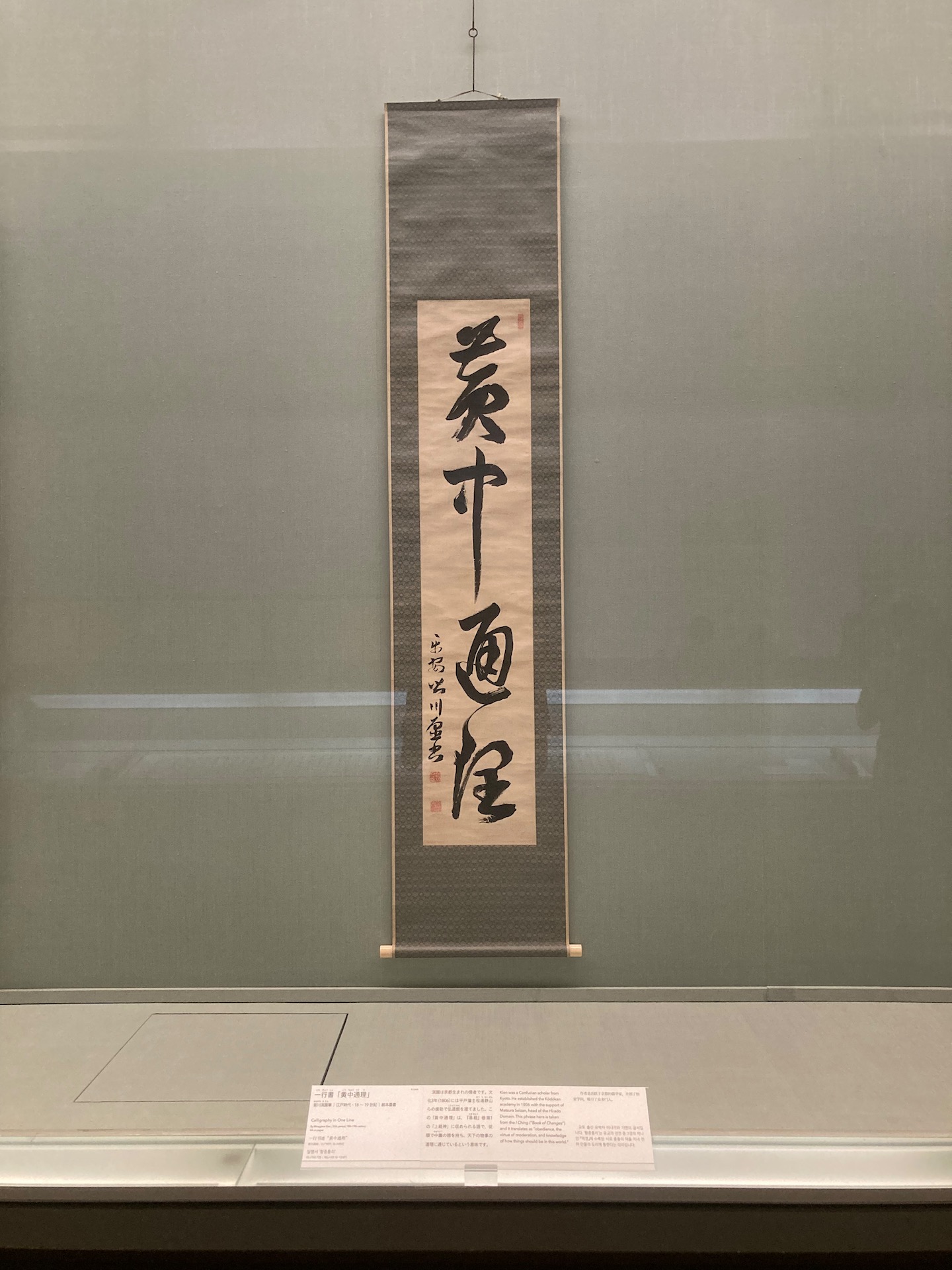
“obedience, the virtue of moderation, and a knowledge of how things should be in this world.” —seen at the tokyo national museum.
visited the national museum, and was mildly disappointed2. a museum shouldn’t be a place for curators to distribute facts they know of : it should be curated to answer questions that visitors are (or should be made) curious about.
presented my work at ideo tokyo. tim brown said my work reminded him of durrell bishop ; given how much i admire durrell’s immutable enthusiasm, it meant a lot to be spoken of in the same breath as him. ana arriola-kanada wrote: “keep playing and exploring; we for sure need more of this.” i didn’t get a chance to express how trying to be ‘playful’ (in a world that actively punishes people like me for it) has run me into the ground ; but her words went some way in helping me feel less pessimistic about things.
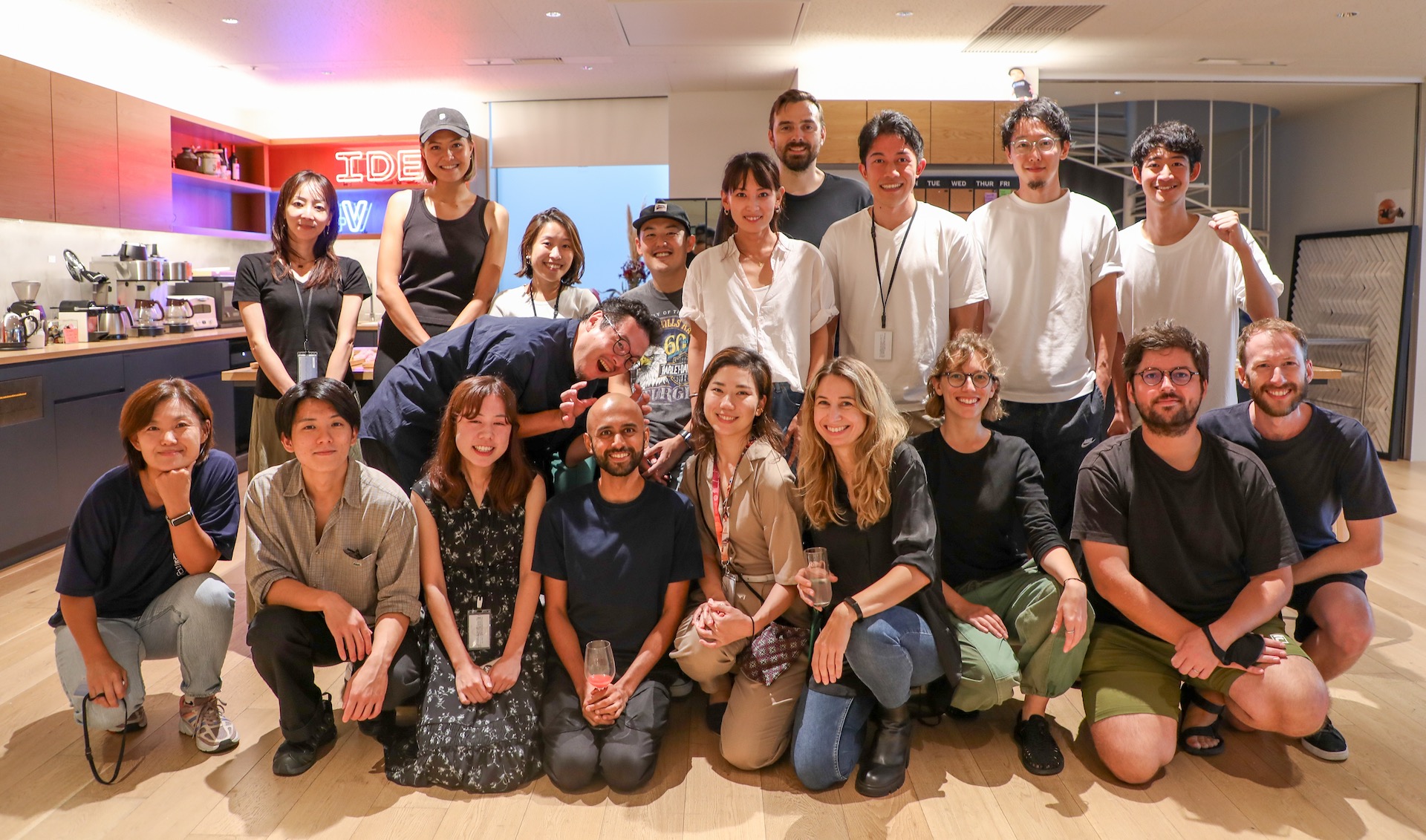
visited the cygames exhibition in ueno: their work reaffirmed how, no matter how impressive3 generative images may seem, illustrations made by people are relatable (and, hence, significantly more emotionally affective). warmed up to the notion of kawaii (thanks to hellokitty and her ilk) — a little bit, though, not too much.

satoru (who i used to work with at random), introduced me to shohei takei ; we met at shohei’s studio, nomena, in asakusa, and went for dinner after. i prefer visiting modest homes and craftsmen’s workshops (instead of monuments and shrines) when i travel, because those are where livelihoods, passions and cultures play-out.
evaluated what it would mean to live (while working as a design consultant) in tokyo. ideo’s studio was in omotesando ; so i rented an apartment to its west. chourouk, ever lively, came down from morocco to live with. struggled to find vegetarian food : vegan, slightly less so. cooked: ample. was gifted chopsticks by the chef at vegetarian beast in mejiro-ikebukuro.
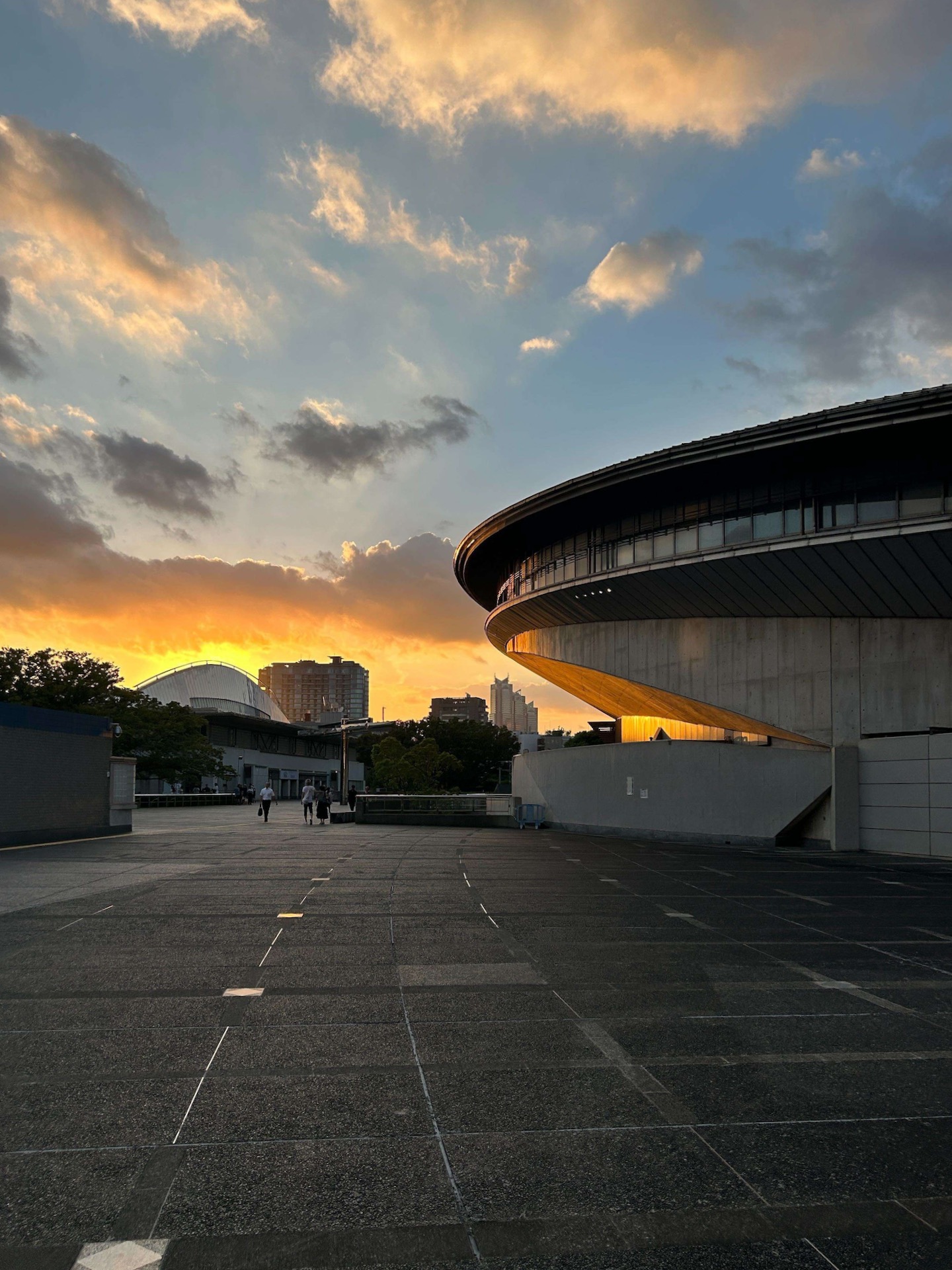
the tokyo metropolitan gymnasium; shot by chloé keeble while heading to the pool.
.jpeg)
rental-apartment, in shimo-takaido.
obsessed over robotic toilets for much too long. bought a climbing membership. indulged in urban spelunking: loved the lane-discipline while walking or climbing stairs; used translation tools to place restaurant orders; resisted the urge to jaywalk (and then scoffed at those who did); avoided speaking on the phone in trains. experienced plastic mediocrity in a dermatological clinic, after a mysterious bite ’d disnatured my arm. didn’t walk up mount fuji; didn’t travel to kyoto or hiroshima either; remained optimistic i’d visit japan again and do so.
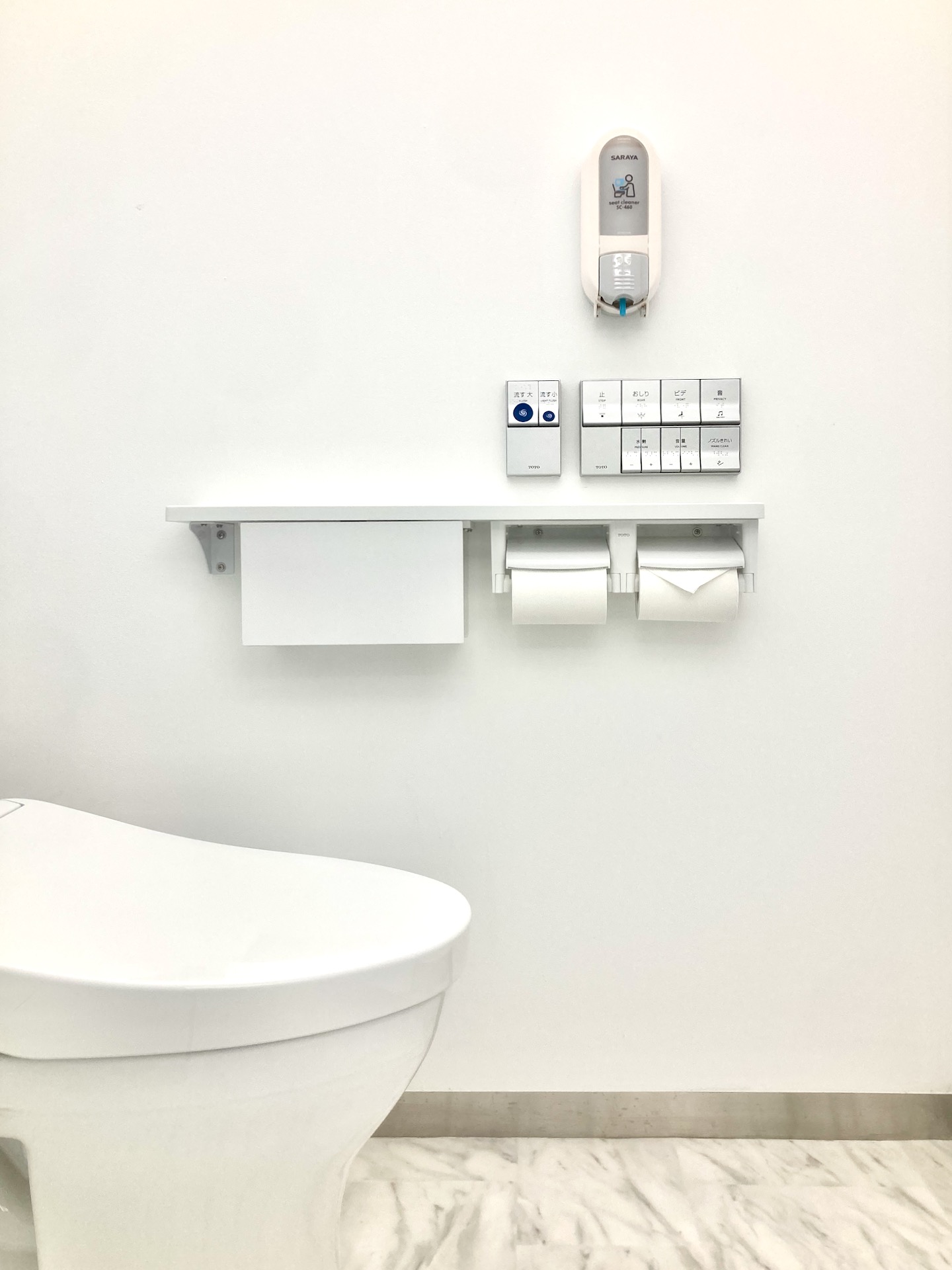
lamented the staggering volume of plastic waste produced by tokyo. similar to what i noticed in stockholm, peoples from ‘developed’ parts of the world are proud of how they eliminate waste (by recycling, or by burning it for electricity, or even by dumping it into less-‘developed’ nations), but refuse to produce less waste to begin with. irrespective of arbitrary boundaries we draw on our stupid maps, we do live on a single planet (with a single interwoven climatic system), and i can’t understand why people can’t wrap their ‘developed’ heads around this and act responsibly. after a point, i experienced pain (viscerally) every time i purchased bananas or potatoes, walked-past shelves of single eggs or tiny meat-slices, or received an oshibori at a restaurant — all items, wrapped in single-use plastic.
there is much order and discipline in japan (and i like that), but it is also violently4 enforced. the air in tokyo is unpolluted, but the the smell of (silent) judgement is difficult to shake off : even so, there’s much kindness on offer on the streets (if you seek help). also: not knowing the language allows you to crawl snugly into a bubble, feign ignorance, and focus on those things that matter the most to you5.
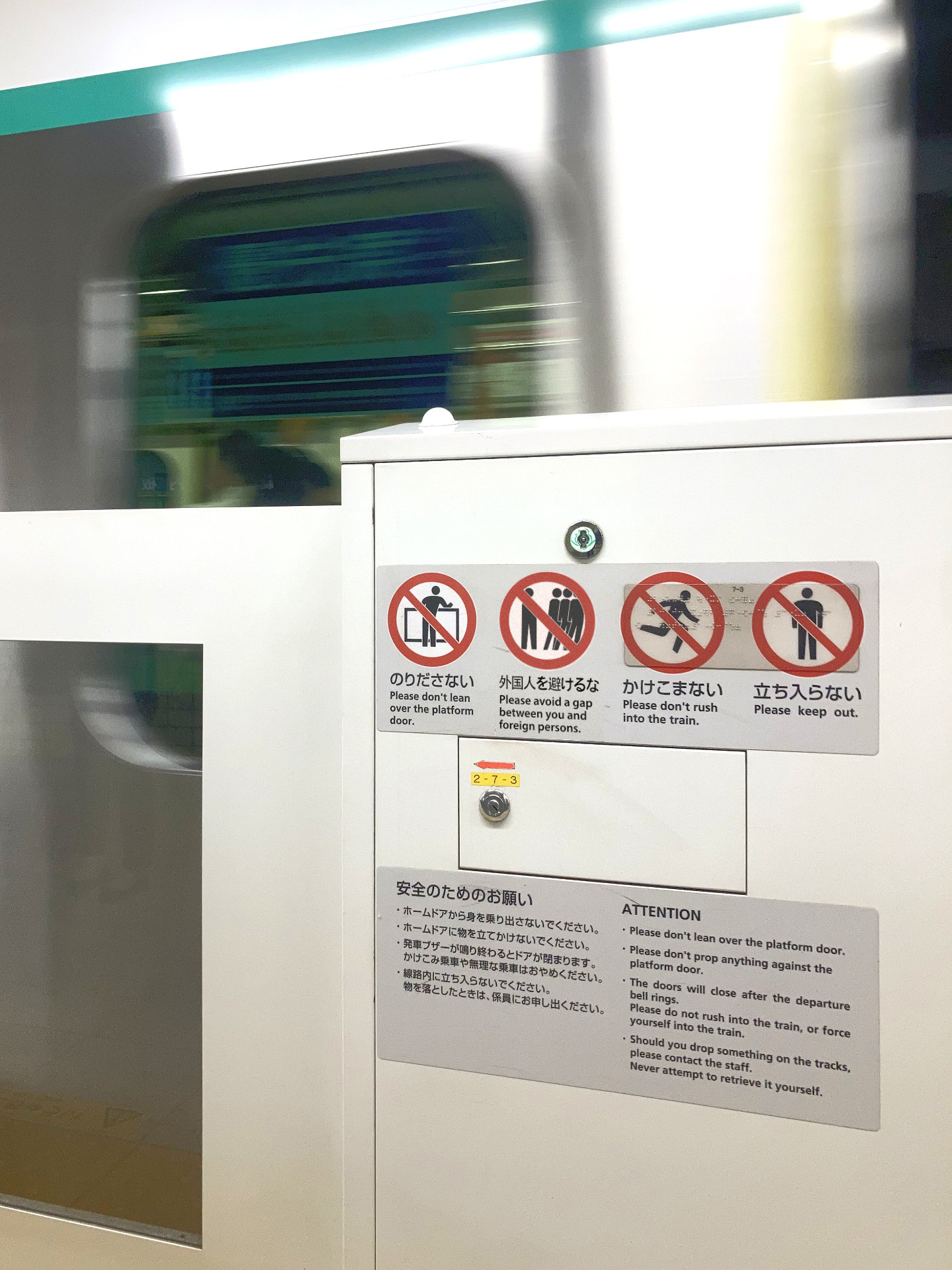
a design fiction, imagining metro-signages from a future where japan decided to become an inclusive society. (encouraged by rhianna davies, chourouk and me thought how the phrase “mind the gap” can be used subverted to “mind the gap (between you and foreigners)”.)
noticed a girl cross over to the other side of the street as she passed where i stood ; and chourouk observed an older woman cover her face as soon as we sat beside her in the metro. it’s not a nice thing to experience, but (thankfully) racial discrimination affects me lesser now than it did six years ago (when i witnessed someone being spat on in london). it is better, perhaps, if things that we can not control aren’t allowed to control us.
Jan Rod introduced me to a ian lynam’s bookshop, sailosaibin. xenophobia sucks, but it was nice to hear that, in japan, i sit in the same boat as ian — a tall white american male — when it comes to being otherised. (i fell in love with yukimasa matsuda’s book, ‘zerro’, and purchased a copy.)
as a gaikokujin (“outsider”), you will inevitably experience loneliness. if you can ignore bracket that, however, tokyo is actually quite nice to live in: safe, clean, functional ; almost boringly so (but in a good way).
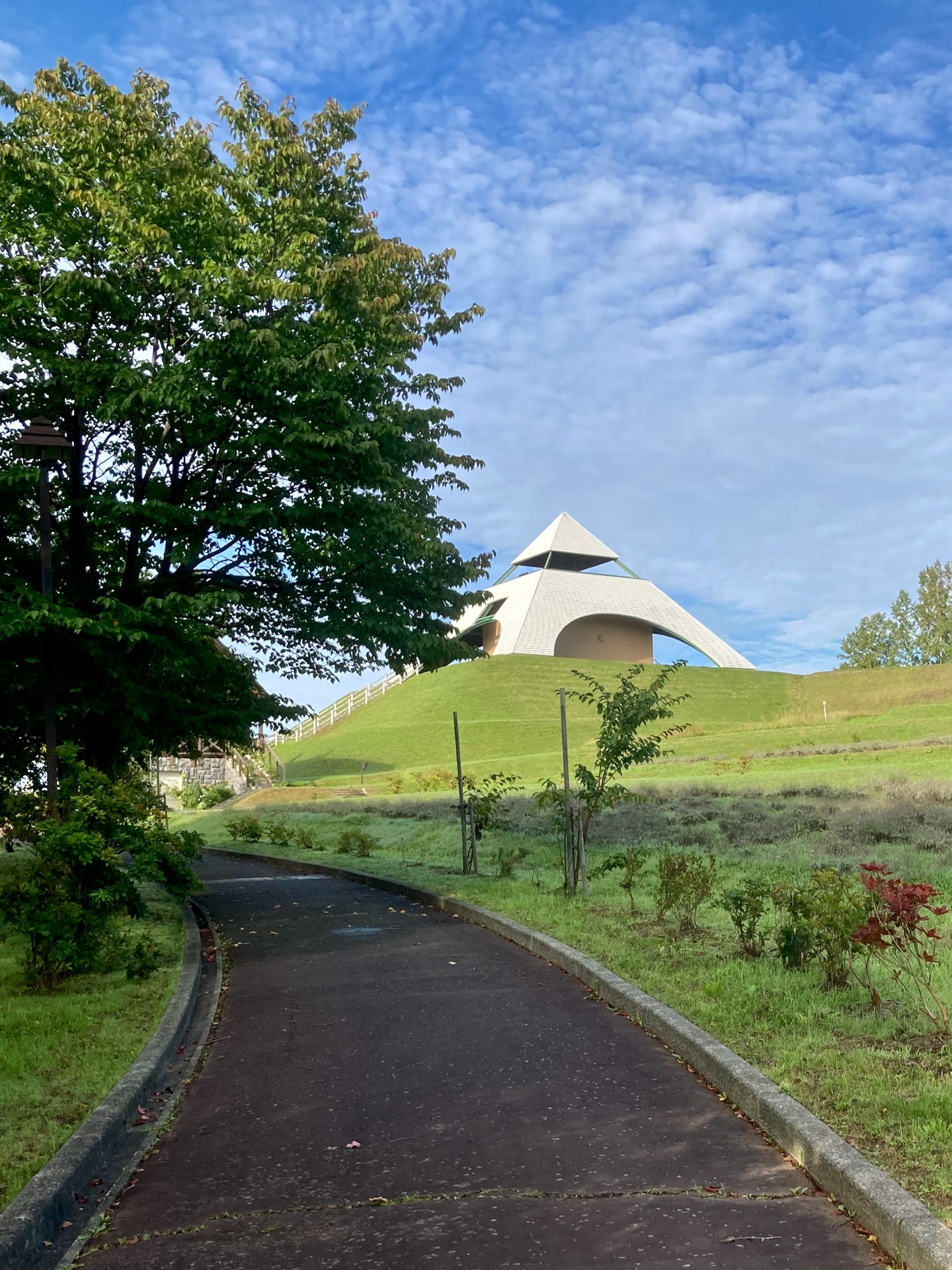
observation deck. biei, hokkaido.
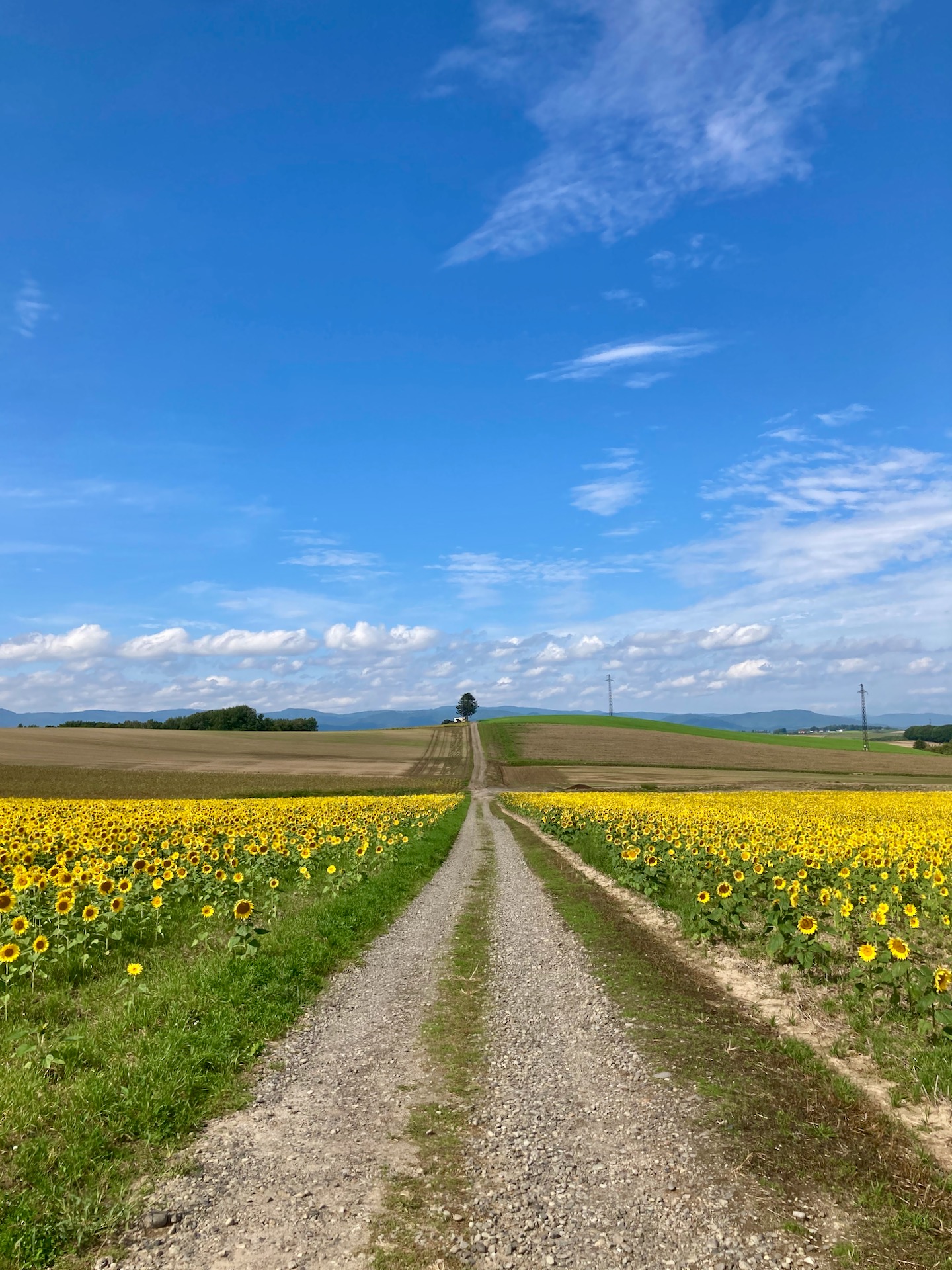
sunflower field. apparently: planted by a mother so that they bloom at the time of her daughter's graduation. biei, hokkaido.
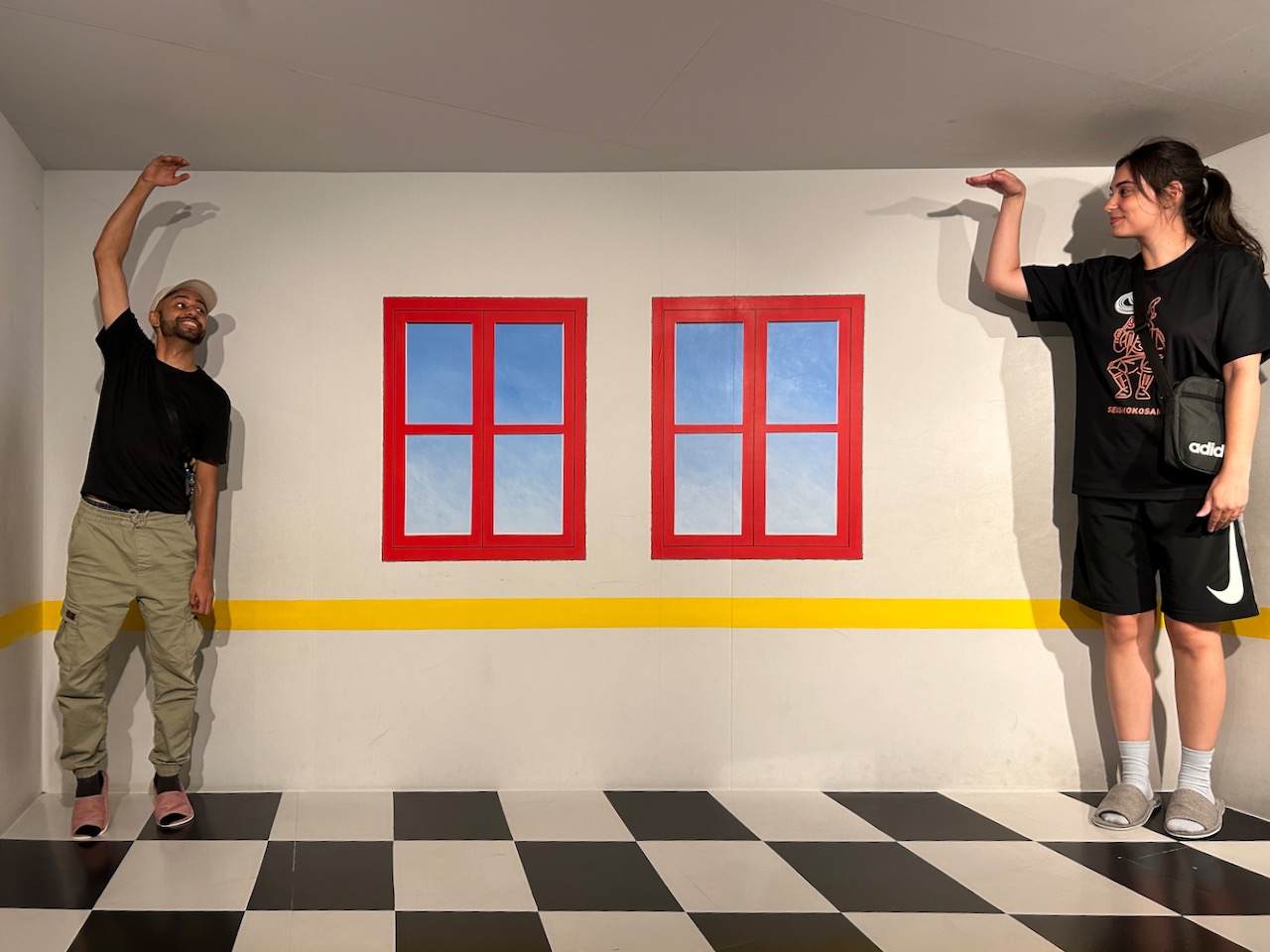
trick-art museum. kamifurano, hokkaido.
traveled over two days (switching a dozen trains) to visit ellen in hokkaido ; responded, “it was worth it”, when an innkeeper asked if.
didn’t quite enjoy the shinkansen (bullet train). while it’s great to get from A to B quickly, there’re so many tunnels and barricades6 all along the route that most of your view is blighted by concrete. all in all, i think the shinkansen captures the nature of human technological progress really well: we’ve grown incredibly efficient, but somehow life’s grown bland as a result. some slowness (instead of productivity), i say, makes life worth living.
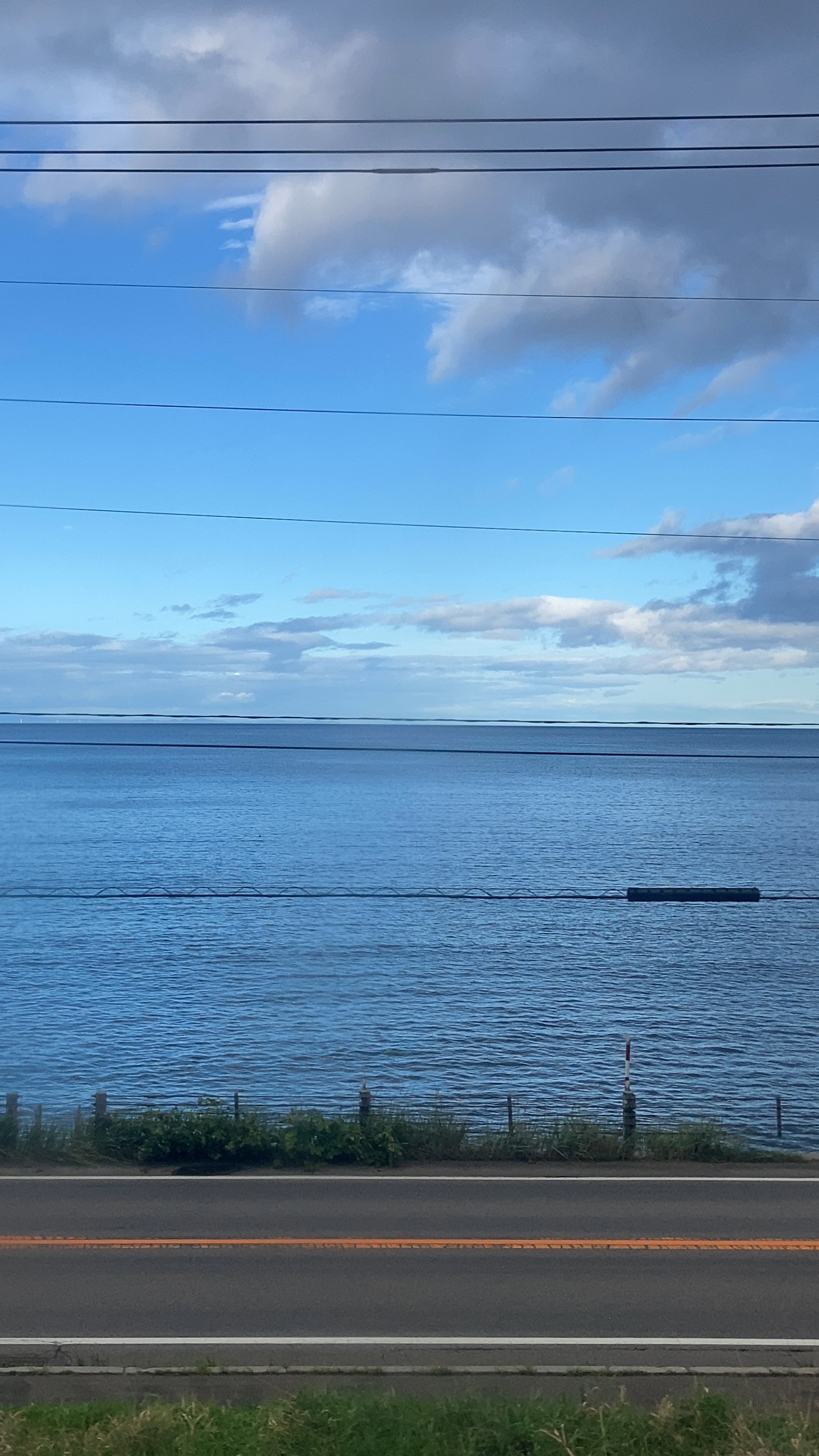
looking out of a train in hokkaido. (see: video.)
footnotes:
-
i did eventually make it there, dheer sah’b ; and i bet this made you smile. i wish you were still alive, though, so that we could catch up over chai. ↩
-
curators, it seems, do little better than display objects for us to see (and write words for us to read). why do they not consider a museum their theatre, or take us on journeys with them? and why do they not recite their stories to us? how can they expect people to pay attention to history, when they present it to us so dispassionately? ↩
-
i’ve written about impressive technologies and relatable work before. i was using conversation design as my crutch, then. ↩
-
the violence is not physical, loud or visible : it is, yet, quite effective. ↩
-
language is important. however, it is employed pervasively to steal our attention. so, being ignorant of japan’s language — and resorting to translation-tools when conversation grows unavoidable — is actually a powerful antidote against the toxicity of (mass-)media. ↩
-
tunnels, i would guess, help reduce undulations on the tracks (and allow the trains to achieve higher speeds). i can not fathom the reason for abundant barricading, but i consider the train’s loudness to be one factor ; the need to reduce animal collisions may be another. ↩